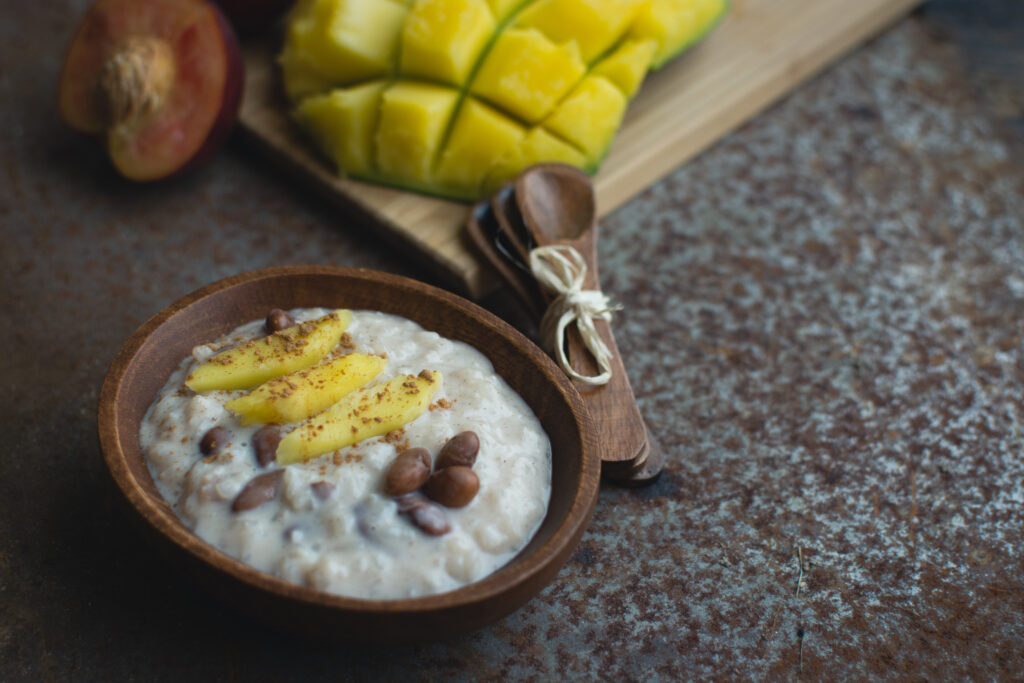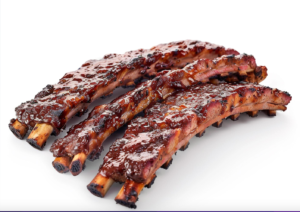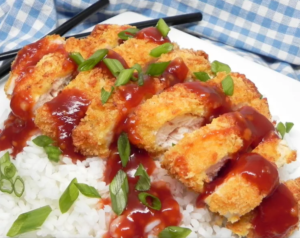Rice is a staple ingredient in countless dishes, especially in Filipino and Asian fusion cuisine. Its texture plays a crucial role in the success of a recipe, but achieving the perfect consistency can be challenging, often leading to the common problem of mushy rice.
In this blog post, we’ll uncover the causes of mushy rice and provide practical solutions and tips to avoid it. We’ll explore effective methods to prevent and fix mushy rice, ensuring your culinary creations are always delightful. Additionally, we’ll introduce creative ways to repurpose mushy rice, turning a kitchen mishap into an opportunity for culinary innovation.

If you’re looking for rice recipes that turn out perfectly every time, try my pork fried rice, chicken fried rice, steak fried rice, bacon and egg fried rice, and garlic fried rice recipes. They’re all quick and perfect for a weeknight meal!
| Jump to: 1-Why Rice Turns Mushy: Understanding the Culprit 2-Saving Mushy Rice 3-How to Fix Mushy Rice 4-Perfecting Your Fried Rice 5-Conclusion 6-FAQ 7-Rice Recipes to Try 8-Filipino Recipes You May Like 9-💬 Reviews |
Why Rice Turns Mushy: Understanding the Culprit
Perfecting the texture of rice is crucial in many dishes, from simple sides to elaborate mains. This section delves into the common issue of rice turning mushy.
Excess Water and Incorrect Water Ratio:
Using too much water during cooking often results in mushy rice. The water ratio is critical; too much water causes the rice grains to absorb more liquid than they can handle, leading to a breakdown in their structure. This issue is common when using a pressure cooker or rice cooker without proper measurements.
Overcooked Rice:
Cooking rice for too long or at too high a temperature can cause the grains to burst open and release excess starch, resulting in a gluey, mushy texture. This can happen on the stovetop or in cooking appliances if the rice is not properly monitored.
Type of Rice and Its Preparation:
Different types of rice behave differently when cooked. Short-grain rice, often used in dishes like sushi, is naturally stickier, while long-grain rice, preferred in many Chinese restaurants, is fluffier and less prone to clumping.
Rice Quality and Starch Content:
The quality of rice impacts its cooking behavior. Poor-quality rice may have higher starch content, making it more susceptible to becoming mushy. Washing rice thoroughly in cold water until the water runs clear can help remove excess starch, which is especially important for achieving perfect fried rice.
Cooking Method and Utensils:
The method and tools used for cooking rice also play a role. Using a small pan or the wrong pan can lead to overcrowding and uneven cooking, contributing to a mushy texture. Additionally, cooking rice at a consistent medium heat and using the right oil can help maintain the desired texture.
Additional Ingredients and Their Moisture Content:
When preparing dishes like fried rice, the moisture content of additional ingredients like fresh meat, vegetables, soy sauce, or oyster sauce can add unwanted moisture to the rice. Ensure these ingredients are adequately dry or cooked before adding them to the rice to avoid making the fried rice mushy.
Saving Mushy Rice
Draining and Drying:If your rice turns out too wet or mushy, start by draining any excess water using a strainer or colander. Spread the rice on a baking sheet and place it in an oven preheated to 350°F for a few minutes. This helps dry out the rice and improve its texture.
Using the Microwave: For a quicker solution, place the mushy rice on a microwave-safe dish and cover it with a paper towel. Microwave on a lower setting, checking every 30 seconds. The paper towel will absorb excess moisture, helping to dry out the rice.
Frying the Rice: Fry the mushy rice in a frying pan with a generous amount of oil. Use medium heat and allow the rice to become golden brown, which can help improve the texture and flavor. This method works well for recipes like fried rice, where the goal is to achieve less soggy, more flavorful rice.
Cooling and Refrigerating: Sometimes, cooling the rice to room temperature and then refrigerating it for a couple of hours can improve the texture. The cooling process can firm up the grains slightly.

How to Fix Mushy Rice
Mushy rice doesn’t have to go to waste! Here are creative and practical ways to repurpose it into delightful dishes, turning a cooking mishap into an opportunity for culinary innovation.
Transforming Into Rice Pudding: Use mushy rice to create a classic rice pudding. Blend the mushy rice with milk (dairy or plant-based), sugar, and eggs. Enhance the flavor with vanilla extract or cinnamon. Cook over medium heat, stirring continuously, until the mixture reaches a creamy consistency. This method transforms the unfortunate texture of mushy rice into a delightful dessert.
Rice Fritters or Pancakes: Combine the mushy rice with beaten eggs, finely chopped green onions, and a bit of flour to create a batter. Heat a small pan with olive oil or any preferred oil and drop spoonfuls of the batter, flattening them to form fritters or pancakes. Fry each side until golden brown. These fritters make a creative snack or side dish.
Stuffed Vegetables or Dumplings: Use mushy rice as a filling for vegetables like bell peppers or for making dumplings. Mix the rice with minced fresh meat, finely chopped vegetables, and seasonings like soy sauce or sesame oil. Stuff this mixture into hollowed-out vegetables or dumpling wrappers and cook accordingly.
Baked Rice Casseroles: Mushy rice can serve as the base layer for a hearty casserole. Layer the rice in a baking dish and top with a mixture of cooked meats, vegetables, and a binding sauce like tomato or cream-based sauce. Bake in a preheated oven until the top layer is crispy and golden.
Rice-Based Soup Thickener: Mushy rice is excellent for thickening soups or stews. Puree the mushy rice with a bit of broth and add it back into the soup, cooking over medium heat until the desired thickness is achieved. This technique enhances the soup’s texture while effectively using the rice.
Creating Fried Rice Dishes: While ideal fried rice typically starts with firmer grains, mushy rice can still be transformed. For instance, inspired by JOZmahal’s 15-Minute Easy to Make Pork Fried Rice, you could sauté the mushy rice with pork, adding soy sauce and oyster sauce for flavor. Similarly, from the P.F. Chang’s Chicken Fried Rice (Copycat Recipe), incorporate chicken and vegetables into the mushy rice and fry it on high heat to add some crispiness. Adapt the Steak Fried Rice Recipe by adding thinly sliced steak to the mushy rice, enhancing it with soy and fish sauce for depth. Even the simplicity of Filipino Garlic Fried Rice (Sinangag) can inspire a garlic-infused mushy rice transformation. Use a large wok or pan for each variation, allowing the rice to fry evenly and develop a slightly crispy texture on the outside, adding a new dimension to the otherwise soft rice.
Perfecting Your Fried Rice
Perfecting fried rice, especially with less-than-ideal mushy rice, requires specific techniques to avoid sogginess. Here are steps to perfect your fried rice:
Starting with the Right Rice: Ideally, use day-old rice, like in the 15-Minute Easy To Make Pork Fried Rice recipe. Cold, day-old rice from the fridge has reduced moisture content, which is crucial for preventing mushiness.
High Heat is Key: Cook the rice over high heat, as in the P.F. Chang’s Chicken Fried Rice (Copycat Recipe). High heat allows for quick evaporation of excess moisture, keeping the rice grains separate and preventing sogginess.
Proper Oil Usage: Coat the rice grains with an adequate amount of oil, like sesame or vegetable oil. This technique, reminiscent of Filipino garlic fried rice (Sinangag), helps keep them non-sticky and separate.
Cook in Batches or Use a Large Pan: To avoid overcrowding (which can lead to steaming instead of frying), cook the rice in small batches or use a large pan or wok, similar to the steak fried rice recipe. This ensures each grain gets adequately fried.
Separate Cooking of Ingredients: Fry ingredients like fresh meat, eggs, and vegetables separately, as in the Bacon Garlic Fried Rice recipe. This prevents them from releasing moisture into the rice.
Seasoning: Carefully add liquid seasonings like soy sauce, fish sauce, or oyster sauce. Excess liquid can make the rice mushy.
Stir-Frying Mushy Rice: These techniques become even more crucial if you start with mushy rice. Stir-fry the rice on high heat with adequate oil and seasonings, ensuring it has a chance to dry out and crisp up slightly.
Following these steps, you can achieve flavorful, non-mushy fried rice even when starting with less-than-ideal rice.
Conclusion
Mushy rice might seem like a culinary setback, but with these tips and tricks, you can fix it and turn it into a delicious opportunity. Whether perfecting your fried rice with lessons from JOZmahal’s recipes or transforming mushy rice into a delightful new dish, there’s always a way to salvage and celebrate the humble grain. So, next time you face the mush, remember these tips and cook on with confidence!






